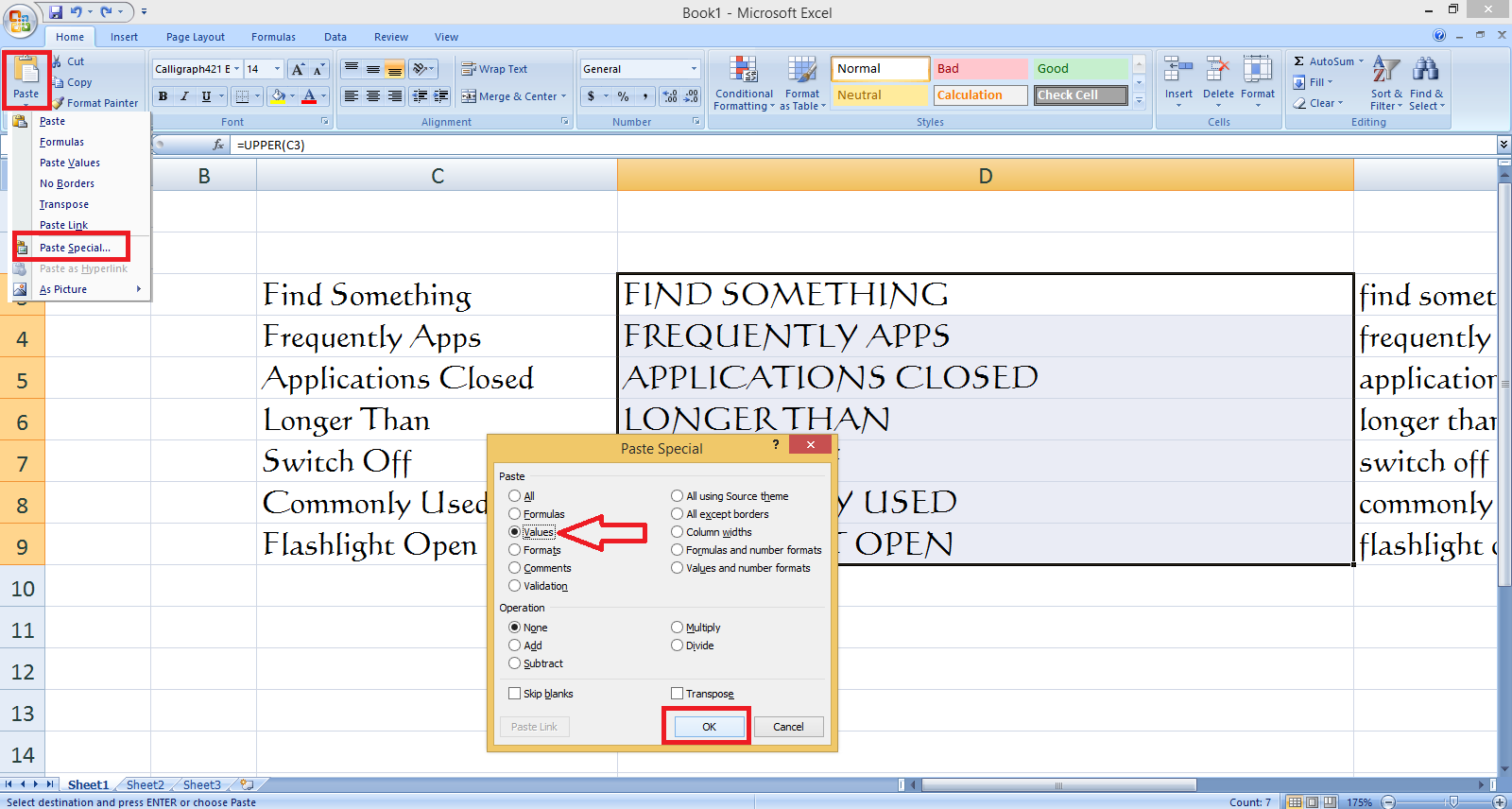Taming the Uppercase: Mastering Text Transformation
In our digital age, where communication reigns supreme, the way we present text holds immense power. A simple shift from uppercase to lowercase, or vice versa, can dramatically impact readability, aesthetics, and even the tone of our message. Whether you're crafting an email, coding a website, or analyzing data, understanding how to manipulate text case is an essential skill.
Imagine receiving an email entirely in uppercase - the digital equivalent of someone shouting their message. It's jarring, difficult to read, and often perceived as aggressive. On the other hand, a wall of lowercase text can feel informal and even sloppy in certain contexts. The key lies in finding the right balance and knowing when to employ different cases for maximum impact.
The ability to convert text case has become increasingly important with the rise of programming languages, many of which are case-sensitive. A single uppercase letter where a lowercase one should be can mean the difference between a functioning program and a frustrating error message. This sensitivity extends to data analysis and manipulation, where consistency in case is crucial for accurate sorting, filtering, and processing.
Thankfully, a wealth of tools and techniques exist to simplify the process of converting text case. Most word processors and text editors offer built-in functions to change selected text to uppercase, lowercase, or even title case (capitalizing the first letter of each word). Programming languages provide commands and methods for on-the-fly case conversion, making it easy to standardize input data or format output as needed. Even online tools and browser extensions offer a quick and easy way to switch between cases with a single click.
Mastering text transformation is not merely about knowing how to switch between uppercase and lowercase. It's about understanding the nuances of different cases, recognizing their impact on readability and perception, and leveraging the right tools for the job. Whether you're a seasoned developer, a meticulous data analyst, or simply someone who values clear and effective communication, the ability to control text case is a valuable asset in our digital world.
Let's delve into some practical scenarios where converting text case proves particularly useful:
Advantages and Disadvantages of Lowercase Conversion
| Advantages | Disadvantages |
|---|---|
| Improved readability in large blocks of text | Can be seen as informal in certain contexts (e.g., titles, headings) |
| Essential for case-sensitive programming languages and data analysis | May require additional steps to capitalize proper nouns or the first word of a sentence |
Best Practices for Implementing Case Conversion
Here are some best practices to ensure effective and consistent case conversion:
- Understand the context: Consider the purpose of the text and the intended audience before converting case.
- Utilize built-in functions: Leverage the case conversion tools available in your chosen word processor, text editor, or programming language.
- Double-check for accuracy: Always proofread your text after converting case to catch any errors, especially with proper nouns.
- Maintain consistency: Choose a case style and stick with it throughout your document or codebase for a cohesive and professional look.
- Test your code: If you're working with case-sensitive code, thoroughly test your program after implementing case conversion to avoid unexpected issues.
Frequently Asked Questions About Case Conversion
1. What's the difference between lowercase and uppercase?
Lowercase refers to the small letters of the alphabet (a, b, c), while uppercase refers to the capital letters (A, B, C).
2. Why is case sensitivity important in programming?
Many programming languages distinguish between uppercase and lowercase letters. This means "variable" and "Variable" would be treated as two different things, potentially causing errors if not used consistently.
3. Can I convert text case in Google Docs?
Yes, Google Docs allows you to change text case to uppercase, lowercase, or title case easily from the Format menu.
4. Are there any free online tools for case conversion?
Absolutely! Websites like convertcase.net or browser extensions offer quick and free case conversion options.
5. How do I convert text case in Microsoft Excel?
Excel offers functions like =LOWER(), =UPPER(), and =PROPER() to convert text to lowercase, uppercase, and title case, respectively.
6. Why is lowercase often preferred for body text?
Lowercase is generally considered easier to read, especially in large blocks of text, as it follows a more natural flow for the eye.
7. Is it ever appropriate to use all uppercase in digital communication?
While generally discouraged, all uppercase can be used sparingly for emphasis or to highlight specific words or phrases. However, overuse can be perceived as shouting and is best avoided.
8. What is title case and when should I use it?
Title case capitalizes the first letter of every important word in a phrase, commonly used for titles, headings, and headlines.
Tips and Tricks for Case Conversion
Here are a few handy tips:
- Keyboard shortcuts often provide the fastest way to convert case in many applications. For instance, Ctrl+Shift+U (or Command+Shift+U on a Mac) typically converts selected text to uppercase.
- Many text editors and IDEs (Integrated Development Environments) have "Find and Replace" functionalities that support case-sensitive searches. This can be extremely helpful for fixing inconsistencies within a document or codebase.
- Don't forget about accessibility! While stylistic choices are important, always prioritize readability and clarity, especially for users with visual impairments.
In conclusion, the seemingly simple act of converting text case plays a crucial role in effective digital communication, accurate data processing, and error-free programming. By understanding the nuances of different cases, utilizing the right tools, and following best practices, we can ensure our text is presented in a clear, consistent, and impactful manner. Whether you're crafting compelling content or writing clean code, mastering case conversion empowers you to communicate with precision and finesse in the digital landscape.
Bring laughter to christmas funny poems for reading aloud
The allure of the anime blonde guy with gun
Finding the right dr patterson in blacksburg va your guide













